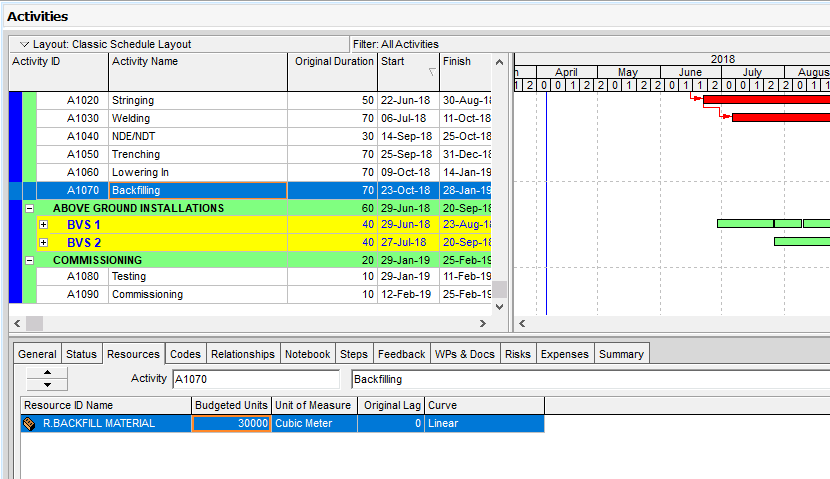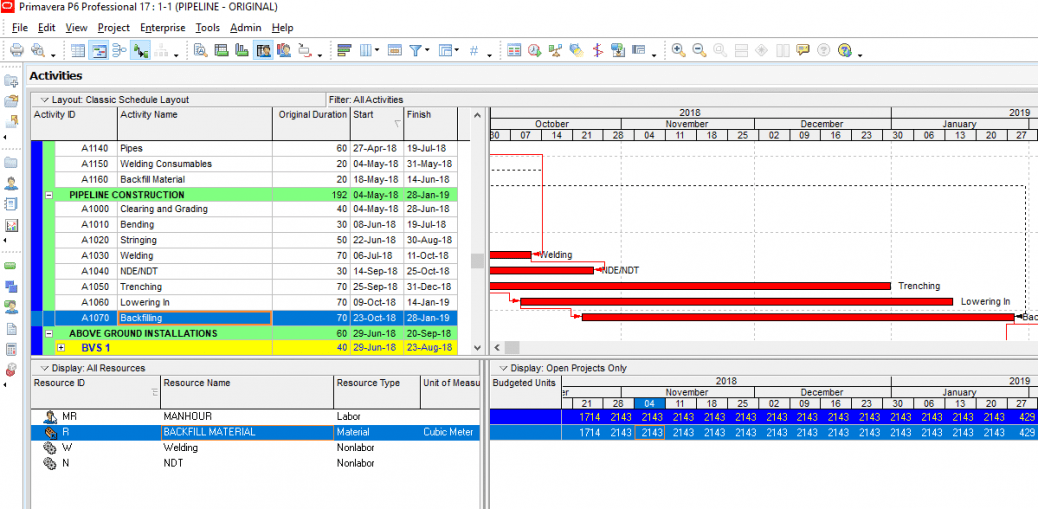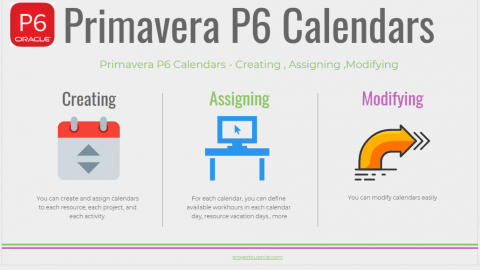Resource Loading in Oracle Primavera P6
High efficiency is key to success for any project in today’s economic conditions. Planning, allocating, and tracking resources effectively through a software tool is a good practice for resource management in a project. Basically, resource loading, resource leveling, and resource smoothing are interrelated concepts of project resource planning. Project managers and planning engineers often make safe assumptions while planning resources for their project’s work schedule. As a result of staying on the safe side, schedules often demonstrate overloads and more resources than required to complete the project on time. Basically, a resource-loaded project schedule provides enough information for decision-makers regarding its applicability. This article discusses the basics of resource loading and demonstrates how to create primavera p6 resource loading spreadsheets.
Table of Contents
What is the Difference Between Resource Loading, Leveling, and Smoothing?
The number of resource loaded schedules are increasing especially in big and sophisticated projects today. As a result of this, most schedule and cost management systems rely on the resource loaded schedules because they are capable of providing enough information regarding the targets of a project.
Obviously, tracking project resources is key to success for companies across all industries. An integrated resource and schedule management system dramatically improves the quality of decision making within the organization.
Once the work schedule is created and the resource estimating process is completed, the resource allocation process comes into play. Resource loading charts and histograms demonstrate the number of resources distributed in specific time periods.
Resource loading charts list the resource requirements as a function of the time period. They provide a general understanding of the number of resources required to complete the project.
For better understanding, let’s review the figure below.
This figure demonstrates an example of a manhour loading chart for a housing project. It shows a spreadsheet for the time distributed data of the production workforce, week by week. As shown in the figure, the total duration of the project is 10 weeks and the workforce is divided into categories. Electrician, Unskilled Labor, Skilled Labor, Foreman, and the Mechanic are the main categories. A stacked bar chart or a histogram can be created to represent the resource loading of the work schedule.
Unlike resource loading, resource leveling deals with the allocation limits of resources. It changes the project dates and may change the critical path.
On the other hand, resource smoothing is applied after resource leveling. Resource smoothing tries to use the floats in the best way in order not to change the critical path.
Oracle Primavera P6 Resource Loading
Oracle Primavera P6 Resource Loading feature enables to monitor planned and actual resource quantities. Procurement plans, labor and equipment plans, resource leveling, and payment plans can be made in the light of information gathered from the resource loading histograms or charts. In addition to this, potential risks, unproductiveness, and variances can be determined by comparing the planned and the actual figures.
For better understanding, let’s analyze the sample Primavera P6 project given below.
Resource Allocation for a Sample Pipeline Project in Primavera P6
Below figure (Figure 1) illustrates a sample pipeline project. The duration type of activities is Fixed Duration & Units.
The first step is to create resources in the Primavera P6 Resources Library and define the units of each resource.

Figure 1
In our sample project, main pipeline construction activities such as bending, welding, stringing, backfilling, etc. are created and grouped under the “Pipeline Construction” WBS level. After that, the project network diagram is created by assigning logical relationships to the activities. Now, we will create and assign resources.
Before creating a material resource, define units from Admin | Admin Categories from the main drop-down menu at the top of the screen. This will display the Admin Categories window then, click the Units of Measure tab and add a new unit, Figure 2.

Figure 2
Select Enterprise | Resources from the main drop-down menu at the top of the screen. This will display the Resources view in Figure 3.

Figure 3
Then click the “Add” button and create a material resource. Select M3 for the unit of measure from the Details tab as shown in Figure 4.

Figure 4
Now, assign this newly created Backfill Material resource and insert budgeted quantity for the Backfilling activity as shown in Figure 5.

Figure 5
As shown in Figure 5, we inserted a 30.000 M3 budgeted unit for the A1070 Backfilling activity. Original lag is used to shift the resource distribution of the activity. It can be either positive or negative. Resource curves are used to represent the resource loading of activities within the schedule. If you don’t know how to use resource curves, please read this article from here: Primavera P6 Resource Curves
Resource Usage Spreadsheet to Show Resource Loading
To show the resource loading of the A1070 Backfilling activity, Select View | Show on Bottom | Resource Usage Spreadsheet from the main drop-down menu at the top of the screen. Then, select the resource and customize the spreadsheet by clicking on and select Budgeted Units as shown in Figure 6.

Figure 6
Primavera P6 Tutorial for Beginners
Summary
Most of the schedules are not resource loaded. This means that quantities, material, and equipment resources are not assigned to the activities. Therefore most of the project managers can not prepare realistic plans due to the lack of information. Resource loaded schedules provide valuable information for the future earnings of projects. Integrating resources, costs, time, and schedule improves decision making eliminates problems. A resource loaded schedule is the basis for project control and decision making. In order to monitor the real performance of a project, it must be done well. Primavera P6 resource loading spreadsheets and histograms are used to plan and track the resource performance of a project. With the help of Primavera P6 resource loading spreadsheets, resource allocation can be done effectively and resource leveling can be done when needed.
Further Reading
[1] Koster, K. (2011). What your schedule isn’t telling you.

Irma Gilda is chief executive of Sonic Training and Consultancy Co., the training platform offers project planning and scheduling More than 60 k learners have used the platform to attain professional success. Irma is a professional Primavera P6 Trainer.










